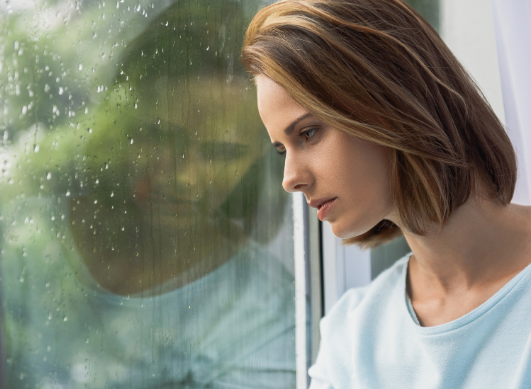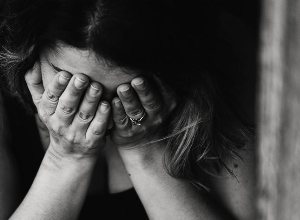Low energy, blues, or depression: How do you tell the difference?
Published 27 Oct 2024 • By Somya Pokharna
We all experience fluctuations in energy and mood. Sometimes it’s a passing dip, like feeling tired or unmotivated after a long week. Other times, sadness lingers longer than we expect. But when does low energy or the blues signal something more serious, like depression? Understanding the differences between these states is important for taking control of your mental health.
So, what is the difference between low energy, the blues, and clinical depression? When is it time to seek professional help?
Let’s break it down in this article!

What is low energy?
Low energy, or fatigue, is a common experience that affects people of all ages. It can be described as a temporary feeling of tiredness or lack of motivation. Unlike depression, low energy is typically short-lived and has clear causes, such as:
- Lack of sleep: Poor sleep hygiene, stress, or insomnia can leave you feeling exhausted.
- Physical or mental exertion: Overworking or exercising too much without proper rest can result in fatigue.
- Nutritional deficiencies: Not eating enough, skipping meals, or poor diet choices can lead to low energy.
- Chronic stress: Long periods of stress can deplete the body's energy reserves.
Low energy is usually temporary and can be resolved with changes in lifestyle such as getting more rest, improving diet, or incorporating exercise into your daily routine. However, chronic fatigue that doesn’t improve with rest may point to an underlying medical condition like anaemia, hypothyroidism, or sleep disorders, so it’s important to seek medical advice if fatigue persists.
What are “the blues”?
“The blues” refers to temporary feelings of sadness or emotional slumps. They are usually tied to specific life events, such as stress, disappointment, or loss. Unlike clinical depression, the blues are milder and generally resolve on their own. Common triggers include:
- Stressful events: Work problems, relationship issues, or financial worries can leave you feeling down.
- Emotional setbacks: Situations like arguments or personal disappointment can cause sadness or frustration.
- Minor losses: Even small losses, like missing out on an opportunity, can lead to brief periods of sadness.
The key distinction between the blues and depression lies in the duration and intensity. The blues are fleeting, often lasting only a few days, and do not prevent you from functioning in your daily life. While you may feel down, you can still find joy in activities and bounce back with time, support from loved ones, or simple self-care measures like exercise or spending time in nature.
Does the season play a role?
Seasonal changes, especially in winter, when daylight is limited, can contribute to low energy and intensify the blues. If your fatigue increases during the colder months, or your sadness becomes more intense and persistent, affecting your ability to function normally, it could be a sign of Seasonal Affective Disorder (SAD), a type of mood disorder linked to seasonal changes.
SAD is a subtype of depression that follows a seasonal pattern, usually beginning in the fall or winter and lifting in the spring. It is believed to be triggered by a lack of sunlight, which affects your body’s production of serotonin (a neurotransmitter related to mood regulation) and melatonin (a hormone that controls sleep cycles).
Symptoms of SAD include:
- Low energy and fatigue: Difficulty getting out of bed or staying active during the day.
- Oversleeping: Feeling the need to sleep much longer than usual, yet still feeling tired.
- Craving carbohydrates: An increase in appetite, particularly for comfort foods, which can lead to weight gain.
- Irritability and withdrawal: Feeling more irritable and wanting to withdraw from social activities.
For those experiencing SAD, light therapy—exposure to bright, artificial light that mimics natural sunlight—can be an effective treatment. Additionally, psychotherapy, medications, and lifestyle changes such as exercise and getting outside during daylight hours may help alleviate symptoms.
How can you tell if you’re depressed?
Depression is a serious mental health condition that goes beyond temporary sadness or fatigue. It affects how you think, feel, and function on a daily basis. Unlike the blues, depression is long-lasting, typically persisting for two weeks or more, and requires professional treatment.
Some of its symptoms are:
- Persistent sadness or hopelessness: A feeling of emptiness or despair that won’t go away.
- Loss of interest: Losing interest or pleasure in activities you once enjoyed, even hobbies or time with friends.
- Fatigue and lack of energy: Even small tasks can feel exhausting, and physical activities may become overwhelming.
- Sleep disturbances: Insomnia or sleeping too much are common in depression.
- Changes in appetite: Eating much more or much less than usual, leading to dramatic weight changes.
- Difficulty concentrating: Trouble making decisions or focusing on tasks.
- Physical symptoms: Some people with depression experience unexplained aches and pains
When is it time to seek professional help?
Here are key signs that it's time to consult a healthcare provider:
Symptoms that won’t go away
If you’ve been feeling sad, fatigued, or emotionally down for more than two weeks without improvement, it may indicate a more serious mental condition. Temporary dips in mood or energy, like the blues or low energy, usually resolve on their own within a few days.
Difficulty functioning
When sadness, fatigue, or lack of motivation starts affecting your ability to work, care for yourself, or maintain relationships, it’s time to seek help. This could include trouble completing tasks at work or at home, struggling to get out of bed or engage in daily activities, withdrawing from social interactions or losing interest in hobbies.
Physical changes
Symptoms can manifest physically in the form of changes in sleep patterns (insomnia or oversleeping), significant weight gain or loss, or unexplained aches, pains, or digestive issues.
Thoughts of self-harm or suicide
If you experience thoughts of self-harm, suicide, or hopelessness, seek immediate professional help. This is a medical emergency, and reaching out to a healthcare provider, mental health professional, or a crisis hotline is critical.
Did you find this article helpful?
Give it a “Like” and share your thoughts and questions with the community in the comments below!
Take care!
Sources:
Depression — National Institute of Mental Health (NIMH)
Depression versus the Blues — Heart of Florida United Way
Depression vs. Blues: Know the Difference — My HealtheVet
Feeling Blue vs. Being Depressed: What Is the Difference? — Lindner Center of HOPE
Is It the Blues or Depression? — Community Health Network
Seasonal Affective Disorder — National Institute of Mental Health
Seasonal affective disorder (SAD) — Symptoms & causes
Seasonal Depression (Seasonal Affective Disorder) — Cleveland Clinic
What's the difference between sadness and depression? — HeretoHelp — BC Partners for Mental Health and Substance Use Information

 Facebook
Facebook Twitter
Twitter


